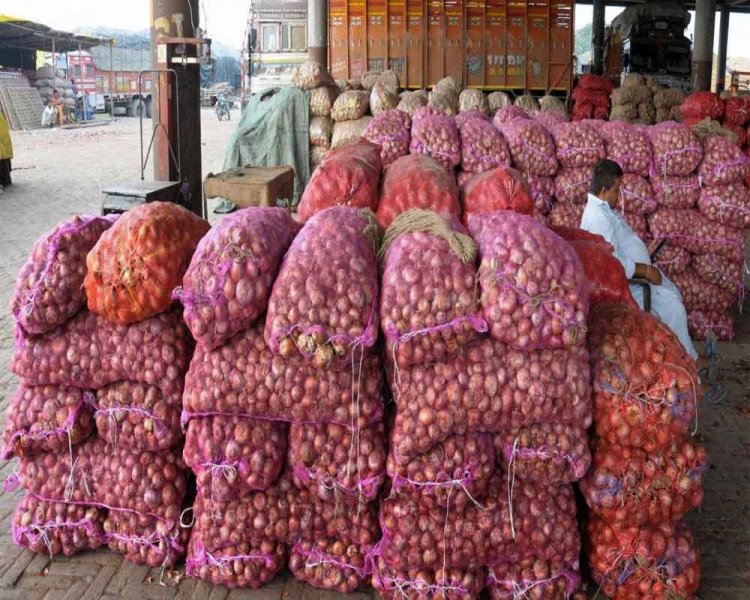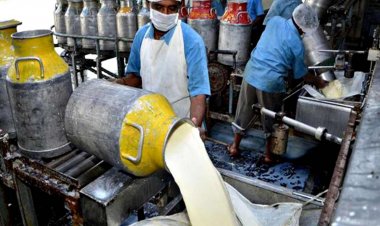Govt exempts Bangalore rose onion from export duty, farmers' leader smells politics
The Centre has exempted export of Bangalore rose onion from duty, subject to certain conditions. Bangalore rose onions were given Geographical Indication tag in 2015. These onions are exported in large quantities and are rarely used in India. They are exported to countries such as Singapore, Malaysia, Indonesia, Bahrain, Bangladesh and Sri Lanka.

The Centre has exempted export of Bangalore rose onion from duty, subject to certain conditions. Bangalore rose onions were given Geographical Indication tag in 2015. These onions are exported in large quantities and are rarely used in India. They are exported to countries such as Singapore, Malaysia, Indonesia, Bahrain, Bangladesh and Sri Lanka.
The Finance Ministry issued a notification in this regard, an official release said. The ministry notified granting exemption from export duty on Bangalore rose onion provided that the exporter furnishes a certificate from the state horticulture commissioner, certifying the item and quantity of Bangalore Rose Onion to be exported.
In August, the government had imposed 40 per cent duty on export of all varieties of onions to increase domestic availability and check price rise in local market. As on date, the average price of onions in the country stood at Rs 33.53, data from Consumer Affairs Department showed.
Beating past records, the Centre has procured 2.50 lakh tons of onion for the buffer in 2022-23. However, despite the ample stock of onions in the country, a high proportion of bad quality onions due to a prolonged period of excessive summer heat this year has made good quality onions expensive. At the same time onion exports jumped 64 per cent in volumes to hit a six year high at 25.25 lakh tonnes during 2022-23.
Bangalore Rose onions have unique characteristics. These onions have bulbs with flat base. They are spherical. They have a unique deep Scarlet red colour. Unlike the normal onions they are rich in anthocyanin, phenols and high pungency. Also, they are rich in Phosphorus, protein, iron and carotene. The pungent property of these onions makes them highly suitable to be used in pickles.
In the financial year 2010-11 around 22,000 tonnes of Bangalore Rose onions were exported. However, this was less as compared to the exports in 2003-04 and 2005-06. In these years the export of these onions were 36000 tons and 32,000 tonnes respectively.
In order to increase the production and export, the Agri Export Zone was set up for the crop in Karnataka. Also, the Government of India recently provided GI tag to the onions in 2015. These measures increase the production of Bangalore Rose onions in Karnataka to around 60,000 tonnes per year. The Government of India recently banned the export of onions to increase its availability in the country. This hit export of Bangalore Rose onions severely. Almost 90 per cent of Bangalore rose onions and Krishnapuram onions are meant only for exports. Krishnapuram onions are similar to rose onions.
Around 80-85 per cent of Bangalore rose onions are produced during Rabi season and the remaining are produced during kharif season. Due to the export ban, the farmers were forced to sell the Bangalore Rose onions at a very low price of Rs 6 per kg. This has affected the income of Bangalore rose onion farmers.
When contacted, Anil Ghanwat, Ex president of Shetkari sanghatna, and member of the the Supreme Court-appointed committee on farm laws, told Rural Voice that there is no need for any ban on export of any variety of onion. "There is no need for imposition of any export duty on onion. It should be totally free," he said, adding that the decision of the government and its timing smack of politics.
This variety of onion is grown in Karnataka, Andhra Pradesh, Telangana border areas. Since Andhra Pradesh and Telangana is going to polls, the decision has been taken to appease farmers of the belt and garner their votes, he said. Asked about the speciality of this onion, Ghanwat said it has better shipping quality and higher productivity.



 Join the RuralVoice whatsapp group
Join the RuralVoice whatsapp group







































